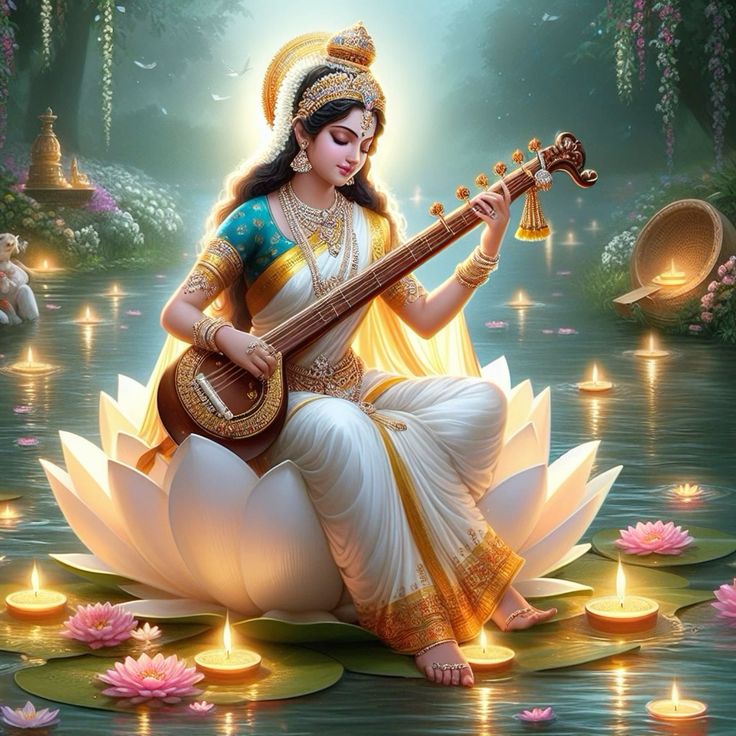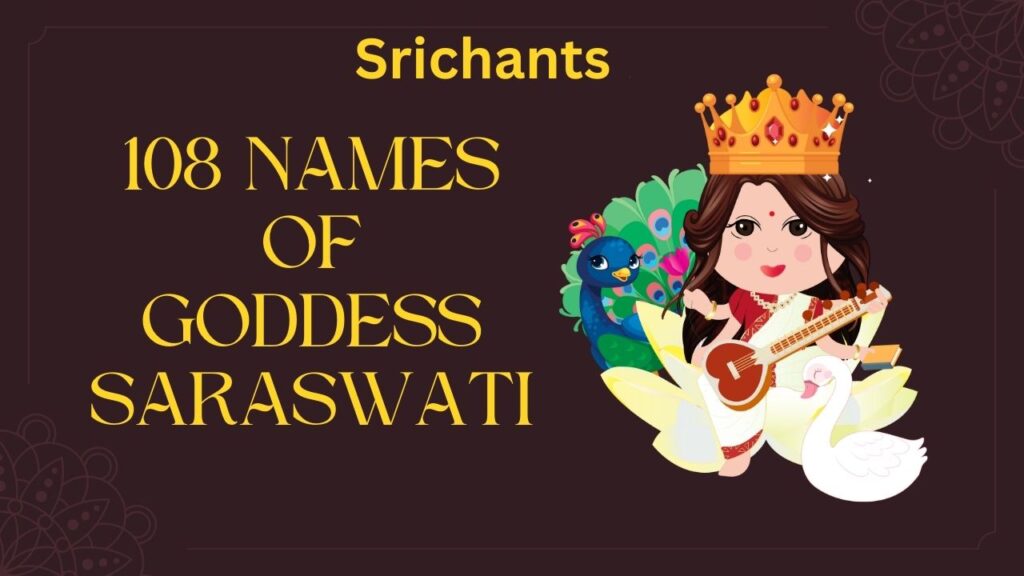Ganga River: Saraswati and Ganges river connection
Introduction
Within the complex fabric of Hindu mythology, the goddess Saraswati is unique and multifarious, reflecting the divine core of wisdom, scholarship, and the arts. Her great relevance goes beyond the physical world since she is connected with the holy river Saraswati and performs a celestial role as the consort of the creator god Brahma. This paper explores the complex relationships among the goddess Saraswati, the river Saraswati, and the Hindu pantheon, therefore revealing the deeper symbolism and legendary narratives that have molded her ongoing legacy.
Personification of the Saraswati River
Respected as the most holy of all rivers, the Saraswati River is abound in references found in the Vedas, the ancient Hindu books. Said to originally run across the Indian subcontinent, this great river is closely connected to the goddess Saraswati. Celebrated as the embodiment of knowledge, wisdom, and the arts, the river Saraswati is personified in the Vedic tradition as the goddess Saraswati.
Mythological Origins of the River
Hindu legend holds that the goddess Saraswati’s connection with the river derives from a curse the goddess Ganga inflicted upon her. The three wives of the god Vishnu—Ganga, Saraswati, and Lakshmi—have a conflict told in the Devi Bhagavata Purana. Following this fight, Ganga cursed Saraswati to incarnate as a river while Saraswati in turn cursed Ganga to accomplish the same. The river Saraswati emerged from this heavenly decree and became a physical form of the goddess’ soul.

Significance of the River Symbolically
In Hindu culture, the Saraswati River is quite symbolic. Respected as the goddess Saraswati’s personification, the river offers knowledge, inspiration, and spiritual illumination. Describing the Saraswati River as a strong and cleansing stream nourishing the country and its people, the Vedas praise its qualities. The river is revered for pilgrimage and ceremony since its connection with the goddess Saraswati also links it to the holy domain.
The celestial part Saraswati plays as Brahma’s consort.
Apart from her earthly form as the Saraswati River, the goddess Saraswati holds a major role in the Hindu pantheon as the celestial consort of the creator god Brahma. Saraswati’s celestial character adds even more to her multifarious nature and richness of symbolism.
Saraswati’s birth
The Matsya Purana holds that the creator god’s own creative qualities enable Saraswati to arise as Brahma’s divine companion. Dissatisfied with his first creation, Brahma meditated and produced a brilliant female form called Gayatri, sometimes known as Saraswati, who later married him.
The Consort of Brahma: Saraswati
Respected as the goddess of knowledge, learning, and the arts, Saraswati is Brahma’s consort. She is thought to have given mankind the gift of language, especially the Sanskrit tongue, regarded as the sacred language of the Vedas. Being by Brahma’s side, Saraswati represents the inseparable link between heavenly knowledge and the act of creation since she inspires and enlightens all kinds of artistic activities.

Saraswati’s Complex Iconography
The goddess Saraswati’s visual depictions also mirror her divine nature’s depth and complexity. Saraswati is shown in several forms in Hindu art and symbolism, each stressing a different facet of her multifarious personality.
The Goddess Traveling on a Swan or Goose
The goddess Saraswati is seen in one of the most identifiable iconographic forms as seated on a white goose or swan. Reflecting Saraswati’s function as the dispenser of knowledge and wisdom, this symbolic mount, known as the Hamsa, is thought to be a creature able of discriminating and separating the pure from the impure.
Saraswati Holding the Veena
Saraswati is also famously shown as the goddess carrying the veena, a stringed musical instrument. This link with the arts and music emphasizes Saraswati’s patronage of the performing and creative arts, therefore guiding and motivating musicians, poets, and artists in their work.
The Goddess Possessed of a Book or Manuscript
Often shown carrying a book or manuscript, Saraswati represents her position as the goddess of knowledge, learning, and the written word. This imagery emphasizes her function as the living example of wisdom and knowledge diffusion.

The River Saraswati in Hindu Pilgrimage and Ritual
Beyond her heavenly and mythological links, the respect for the goddess Saraswati shows itself in the significance given to the actual river Saraswati in Hindu pilgrimage and rites.
The Tri-Veni Confluence at Prayag
Located at Prayag (present-day Allahabad), the tri-veni, or confluence of the Ganges, Yamuna, and Saraswati rivers, is among the most important places connected with the river. Renowned as the “king of all pilgrimage sites,” this holy site is thought to be the meeting point of the earthly Saraswati River with the Ganges and Yamuna, therefore creating a potent spiritual nexus.
The Saraswati River’s ritual significance
In Hindu religion, the Saraswati River is quite ceremonial important. Celebrated at the tri-veni confluence every 12 years, the Kumbh Mela celebration is one of the holy events where pilgrims and devotees swarm to the river’s shores. Beloved for spiritual cleansing and the reception of divine benefits, the Saraswati waters are thought to have purifying and transforming qualities.
Saraswati River and Indus Valley Civilization
The possible link between the Vedic Saraswati River and the ancient Indus Valley Civilization has attracted a lot of scholarly controversy recently. This lecture has clarified the historical and archeological relevance of the Saraswati River as well as its possible function in connecting the Vedic and Indus Valley civilizations.
The disappearance of the Saraswati River
The Saraswati River is one of the fascinating features since it seems to vanish from the contemporary scene. Although the Vedas and other ancient writings make frequent reference to the river, none of the main rivers now running across the Indian subcontinent match this description. This has caused academics to conjecture on the river’s past direction and possible function in the evolution of prehistoric civilizations.
Saraswati River and Indus Valley Civilization
Emerging data points to the Vedic Saraswati River as a possible main river system used by the third and second millennia BCE Indus Valley Civilization. Finding many archeological sites along the Saraswati’s dry riverbed has spurred fresh interest in the possible links between this ancient river and the Indus Valley people’s cultural successes.

Enduring Legacy and Veneration: Saraswati
With her veneration and worship still a fundamental component of the religious and cultural fabric of the Indian subcontinent, the goddess Saraswati’s great relevance in the Hindu tradition has lasted over the millennia.
Saraswati’s Significance in Hindu Festivities
Celebrated especially during the annual Vasant Panchami festival, which symbolizes the beginning of spring, the goddess Saraswati is Devotees pray, carry out ceremonies, and seek the blessings of the goddess for the search of knowledge, the arts, and creative activities on this lucky event.
Saraswati’s Widespread Popularity
Beyond the Hindu faith, the goddess Saraswati is also rather well-known in Jain and Buddhist traditions, where she is seen as a patron of the arts and education. The many temples, educational institutions, and cultural organizations bearing her name also represent her heritage and help to guarantee that the respect for this multifarious goddess keeps growing in the modern age.
Conclusion
With her twin forms as the river Saraswati and the celestial wife of Brahma, the goddess Saraswati is evidence of the richness and complexity of Hindu mythology. Her connection with education, wisdom, and the creative arts has earned her respect and affection wherever on the Indian subcontinent and beyond. By means of the investigation of Saraswati’s mythological background, celestial function, and ongoing worship, we acquire a better awareness of the great symbolism and spiritual relevance this multifarious goddess holds within the Hindu tradition.
#ganga #river #gangariver #saraswati #gangesVaranasi #ganges #Varanasi







